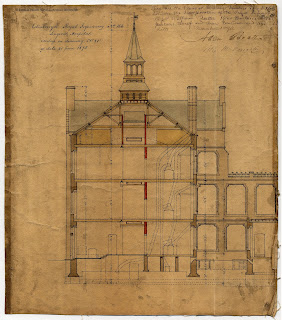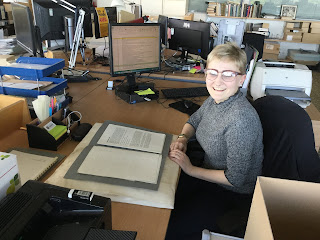This week Access
Officer Louise discusses the Royal Infirmary of Edinburgh Oral History Project…
At the start of May I began an eight month project to
collect oral histories from people familiar with the Royal Infirmary of
Edinburgh building at Lauriston Place. The
project has been funded by the Edinburgh Futures Institute which will be based
in the old hospital building from 2021. You can learn more about the EFI here:
The RIE Oral History project aims
to capture memories from people who used the building when it was a hospital. The
nature of people’s encounters with the building varied so greatly and hopefully
this will be reflected in the project through a diverse range of participants. Potential
interviewees could include members of staff (medical, support services, administration,
etc.), former patients, volunteers and other healthcare professionals
associated with the hospital.
Personal experiences provide evidence and a personal view
that we cannot gain from paper records alone. These interviews will help future
researchers understand the relationship people had, and still have, with the
building.
 |
| LHB1/68/16 - David Bryce Plans for New Infirmary - Overlap on drawing on 81 of 21 June 1875 showing section of clock tower with chimneys. |
Over the past couple of months I have been working hard to
ensure that all my paperwork is in order, and that I have completed any
relevant training. I spent some time listening to recordings that were taken as
part of the pilot for this project which allowed me to think of potential questions
for interviewees. I also attended an ‘Introduction to Oral History’ training day
at the Scottish Oral History Centre, University of Strathclyde, which covered everything
from project planning to consent and copyright. It also gave me a chance to
practice interviewing and being interviewed. This exercise highlighted the
importance of selecting your questions carefully so as to avoid leading and
closed questions!
 |
| Aerial view of the Royal Infirmary of Edinburgh site at Lauriston Place |
The next stage is the interviews themselves, and my diary
for the next couple of months is already filling up with scheduled interviews
and I hope to increase that number over the coming weeks – so I need you to
spread the word!
The interviews will be
relaxed and can be conducted individually or in groups. If you are interested
in taking part, or know somebody who might be, please contact lhsa@ed.ac.uk or 0131 650 3392 for further
information.



